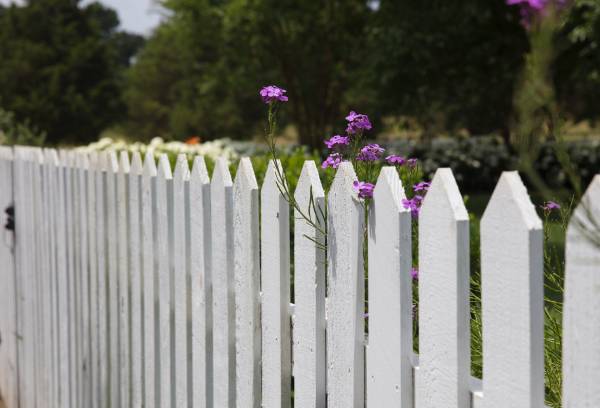Rising wood prices have impacted the building and fencing industries over the past few years.
Since mid-April of 2020, the prices have increased by 130% and have continued to rise sharply.
The growing supply-and-demand shortage has impacted many builders and fence contractors who depend on wood to satisfy customers’ requests.
If you want to know why are fences so expensive and what their effects are on the fencing market and the general public, we have discussed them all in detail below.
We’ll go into greater detail about some of the elements influencing wood costs, such as:
- Increased building of homes
- Closures of wood mills and related industry slowdowns
- Import taxes on wood
- General increases in the price of producing wood
Let’s dive in!

Causes of Increase in Wood Prices!
Several variables are at play leading up to the recent queries:
1. Increase in Demand
Most significantly, while supply has tightened, demand for wood has increased over the previous few years.
The increase in demand is primarily the result of increased home construction activity nationwide; in September of this year, one-family home development reached its highest level in more than 13 years.
2. Wood Mill Closures
The Covid-19 pandemic and earlier increase in demand for timber in sectors such as paper manufacture and home products have contributed to the wood industry’s challenges, including mill closures.
Even though demand for wood is still rising, it doesn’t seem like production is keeping up with the need.
3. Taxes and Duty on Wood Imports
The 20% duty on wood imports that went into effect in November 2017 is another significant factor for timber price rises that have impacted availability.
Most recently, commencing in mid-December, duties on wood were supposed to be dropped to 9%.
While this is encouraging news, there are signs that wood prices will rise further to keep up with the rising demand. In other words, given the consistently increasing demand, tariff reductions will likely offset price increases that would otherwise occur.
Despite the pandemic, the wood supply still hasn’t kept up with demand even though the tariffs have been in place for a few years.
4. Rising Costs of Adjacent Factors
Today’s higher wood costs are primarily a result of the pandemic’s disruption of markets.
In November, the wood prices soared 27%, closing at 630.10 dollars for every thousand board feet. That is far less than the record-breaking 1,000 dollars reached this summer, but it is still more than twice the average cost for boards delivered in January.
The rising costs of labor, transportation, containers, and other expenses that go into producing wood are other factors that drive up the price of wood regardless of supply or demand.
On December 9, 2021, wood futures closed at 754.50 dollars per thousand board feet, signaling an even greater demand for the following year.
Why Are Fences So Expensive? | Factors that Increase the Price Tag!
One of the most popular fencing materials for residential use is wood.
The need for a fence is growing despite the increasing prices as homeowners seek additional outdoor living areas, privacy, and security (as seen by many people moving to the suburbs).
Related article: How to Cut Grass Near a Fence in Under 10 Minutes!
Fences also improve a property’s worth since purchasers perceive them as a bonus feature for which they won’t have to pay extra.
Fencing is a long-term investment that homeowners trying to sell their homes choose to make.
1. Type of Wood
People choose a specific sort of wood for a fence for various reasons, such as color, texture, and care.
While some prefer the deep hue of redwood, which costs around $48 per linear foot (including installation), others choose less expensive options like spruce or pine ($25 or $28).
You must choose the type of wood you want to use while determining your budget because each type of wood has a different price range.
2. Fence Design
Numerous different fence styles can be used for various purposes, just as there are various sorts of wood from which you can select.
If you want to keep the outside world out of your garden, privacy fencing would be the best option, whereas a white picket fence has come to represent the American dream.
Different fence designs use different wood and take varying times to install. That makes your fence style an essential factor in determining the final cost.
3. Removal of Existing Fence
An existing fence may block the passage of your new fence.
For an extra cost, most installers will take down and dispose of the old fence.
How much fencing the contractor must remove will determine the ultimate cost of the job.
Cost addition: $3 to $5 for each linear foot of removed fence.
4. Painting of Fence
Painting or staining is crucial in constructing a wood fence because it guards the wood against decay, insects, and water damage.
However, the price of installation typically does not include paint or stain.
You will need to pay more for the paint or stain and the extra labor hours if you want your contractor to paint your wood fence.
The type of paint or stain you select, the length and height of the fence you need to be painted, and other factors will all affect how much it will cost to paint your wood fence.
Conclusion
Why are fences so expensive, you asked? I hope you now have your answer!
In a nutshell, many factors lead to the increase in the price of wood.
That cost could vary approximately between $1,500 and $7,000 depending on whether you use more affordable or expensive materials.
Alternatively, you may invest about $3,500 in tools and supplies and build your wood fence.
Again, choosing various materials or constructing a particularly huge or small fence can substantially alter how much it costs you!
With that said, let’s finish the talk.
Regards.
